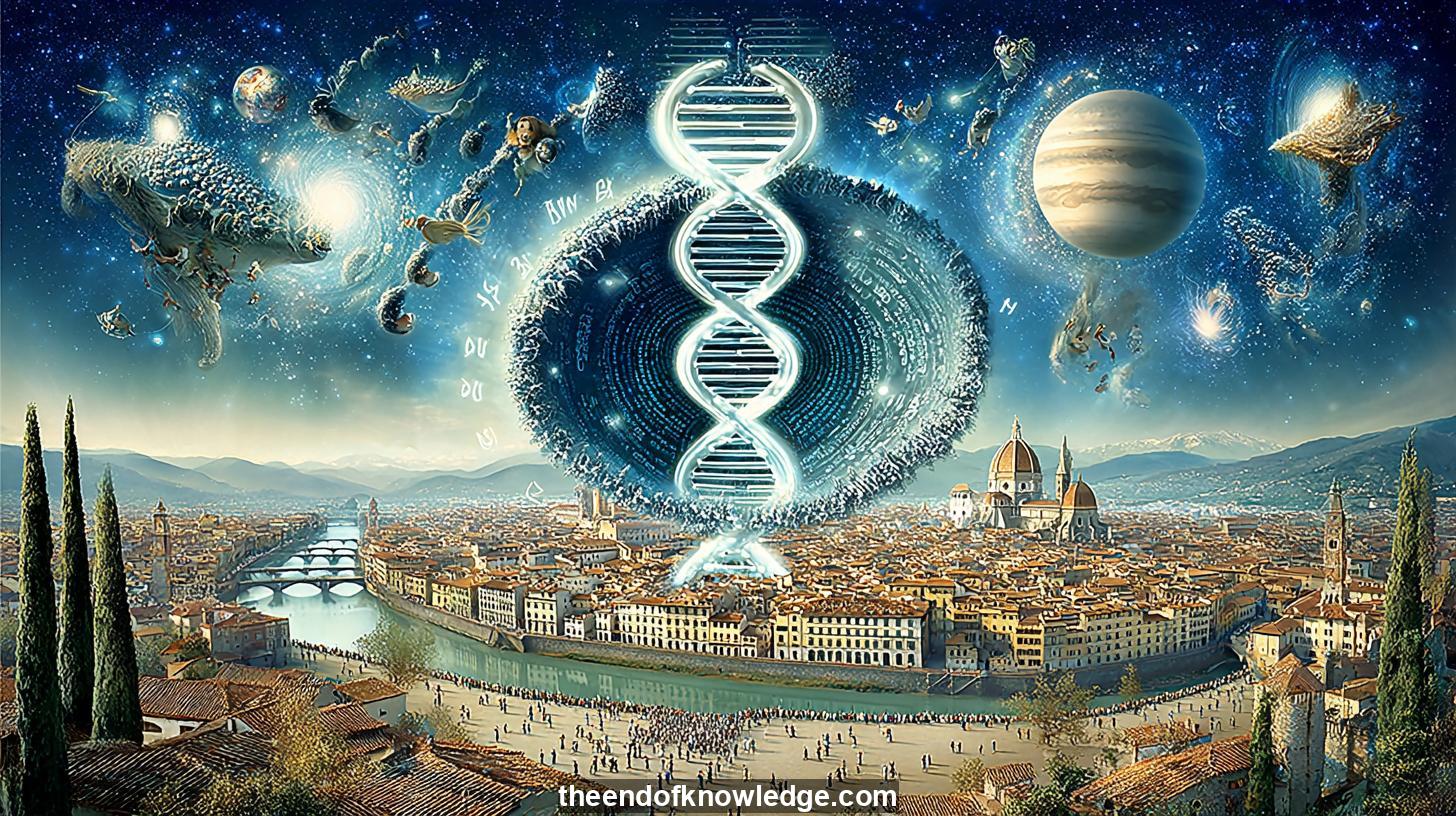 >
>
Concept Graph, Resume & KeyIdeas using Moonshot Kimi K2 0905:
Resume:
The host, Plácido Doménech, opens the episode greeting the XHubAI community and framing the session as a relaxed, post-conference reflection after his Madrid talk for the Spanish insurance sector. He insists that public pedagogy is urgent because critical thinking around artificial intelligence is scarce; corporations and citizens alike need nuanced narratives that go beyond hype or fear. Recounting an anecdote about a local event that advertised an in-person keynote by Geoffrey Hinton but only delivered a Zoom cameo, he laughs at the anti-AI protesters who waved “Pause AI” banners outside the venue. Their medieval-style pamphlets, he argues, illustrate how moral panic can hijack public discourse, yet XHubAI will keep inviting dissenting voices to debate face-to-face, provided they accept the ground-rules of mutual respect.Key Ideas:
1.- Evo model trained on 80,000 genomes wrote functional CRISPR from scratch.
2.- First AI-designed gene-editing system cleaves DNA exactly like natural enzymes.
3.- Team now aims to synthesize complete bacterial genome, turning biology into design.
4.- Public fear waved “Pause AI” pamphlets outside Madrid event missing Hinton in person.
5.- Host insists safety and innovation must co-evolve, not cancel each other.
6.- DNA viewed as language lets generative models write 500× longer sequences than prior tools.
7.- Personalized 24th chromosome could arm humans with on-demand disease immunity.
8.- Resurrecting woolly mammoth by 2028 previews writing new species, not reviving old.
9.- Mars terraforming microbes may be engineered using AI-generated extremophile genes.
10.- Biosecurity risk rises as same tech could craft more infectious viral agents.
11.- Santa Fe Institute seeks universal laws spanning physics, biology, economics, art.
12.- Complexity science studies “organized complexity” between crystalline order and gas chaos.
13.- City GDP scales universally with population^1.15, showing emergent social physics.
14.- Problem-solving matter adapts, remembers, evolves, distinguishing life from inert rock.
15.- Intelligence defined as agent that makes hard problems easy, not mere fast retrieval.
16.- Current large models exhibit capability without comprehension, dubbed “fake intelligence.”
17.- Consciousness may be thin attention window atop vast unconscious computation iceberg.
18.- Emergent phenomena possess new descriptive language screening off micro-details.
19.- Mathematics itself is emergence: proof validity independent of neuron firing patterns.
20.- Flocking birds or termite mounds show macro laws unpredictable from single unit.
21.- Extending human cognition depends on complementary artifacts (abacus) vs competitive (GPS).
22.- Life possibly universal computational process, not tied to carbon chemistry alone.
23.- Evolution of computers shows logic matters more than wood, valve, or silicon substrate.
24.- Functionalist view claims mind substrate-independent; critic counters matter may matter.
25.- AI consciousness debate mirrors historical fears but tools now exist to probe limits.
26.- Neural correlates of consciousness measure brain states yet fail to explain experience.
27.- Mathematicians solve problems unconsciously while awake, hinting layered cognition.
28.- Universe may produce life as efficient entropy generator returning toward equilibrium.
29.- Non-cynical view: life enables universe to know itself, echoing Sagan-esque poetic trope.
30.- Spanish insurance executives showed curiosity and concern about AI disruption last night.
31.- Host criticizes media for medieval panic narratives lacking quantitative risk analysis.
32.- XHubAI community reached 600 Discord members aiming for 700 before year-end.
33.- Podcast episodes available on Spotify, Apple, YouTube; e-books version suffered chaos.
34.- Upcoming Selfish-Ledger episode will explore Google’s controversial evolutionary nudge tech.
35.- Manuel Alfonseca interview postponed third time due to scheduling, not censorship.
36.- Invitation policy welcomes Geoffrey Hinton or unknown students under same debate rules.
37.- Complacency interviews rejected; channel favors critical confrontation over echo chambers.
38.- Previous programmes covered Mustafa Suleiman, Blake Lemoine, Joshua Bengio viewpoints.
39.- Android-building episode framed robots as new species rather than mere human tools.
40.- Westworld spoiler used to illustrate Minsky prediction that robots will be our children.
41.- CRISPR engineered by AI demonstrates shift from reading genome to writing it freely.
42.- Gene therapy count exceeds 500 trials, heralding age of permanent single-dose cures.
43.- Personalized medicine may predict drug reactions by simulating patient-specific genomes.
44.- FDA-approved sickle-cell cure edits one nucleotide, proving small changes yield huge impact.
45.- Extinction reversal ethics questioned: should we resurrect species or design better adapted ones?
46.- Planetary protection protocols may limit synthetic organisms destined for Mars release.
47.- Dual-use dilemma: same DNA printer can make vaccine or weapon depending on intent.
48.- Complexity economics views markets as evolving ecosystems rather than equilibrium machines.
49.- Scaling laws appear in biology: metabolic rate ∝ mass^3/4, showing physics-like constraint.
50.- Adaptation distinguishes living complexity from physical systems like rolling balls downhill.
51.- Observer computational capacity determines perceived complexity, linking info to reality.
52.- Interplanetary project imagines alien music, sport, poetry expanding astrobiology scope.
53.- Los Alamos proximity gives Santa Fe Institute historical nuclear caution toward powerful tech.
54.- Founding president Cowan’s 1950s social entropy talk flopped, seeding interdisciplinary dream.
55.- Institute avoids departments, forcing physicists and economists to share blackboard daily.
56.- Complexity science prefers broken symmetries and frozen accidents over pristine equations.
57.- Phase transitions exemplify emergence: disparate particle rules yield fluid solid gas laws.
58.- Consciousness possibly non-local influence on local brain events, defying deterministic trap.
59.- Human predictive capacity limited by hidden variables, maintaining free-will illusion.
60.- Reductionist neuroscience language can mislead when marketing-level explanations suffice.
61.- Life’s software layer (culture) evolves faster than hardware (genes), accelerating change.
62.- Universe fine-tuned remark concludes episode on optimistic note toward human success.
Interviews by Plácido Doménech Espí & Guests - Knowledge Vault built byDavid Vivancos 2025